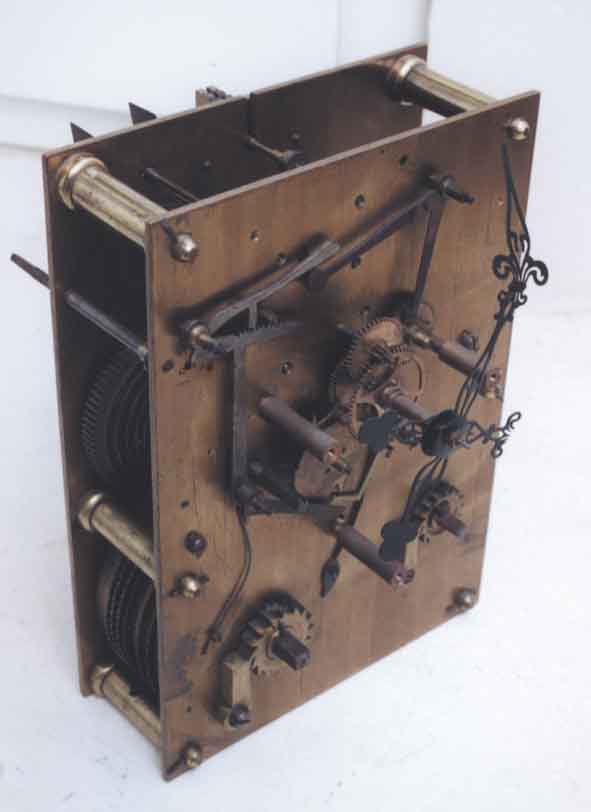Heavy movement
 I bought this ridiculously big and heavy movement about two years ago in Houten, the biggest clock and watch fair in Holland, not knowing enough about it. I still don’t know much.
I bought this ridiculously big and heavy movement about two years ago in Houten, the biggest clock and watch fair in Holland, not knowing enough about it. I still don’t know much.
Obviously it is British, but built for what purpose and why so heavily built?
Some dimensions. The spring barrel for the striking train is 103mm while the other barrel is 70mm. The plates are 4.25mm and the six pillars are 17mm thick. The plates measure 200mm wide by 280mm high and the whole movement weighs approximately 6kg.
It seems you can set the hands from behind though the movement needs to be wound from the front. Very peculiar. For the first 30 seconds I thought it belonged to a church gallery or something similar, but a clock striking in the church wouldn’t please everyone and then there is the matter of winding it. I have no pendulum but found out that its length would be 50cm.
Only now, when writing this letter, have I turned the movement over and noticed a punch mark on it saying ‘JM’ and one which must be the date ‘1886’.
Surely the only reason for building a movement this strong would be to operate a big pair of hands or striking on a large bell or gong. Or am I mistaken? Although the hands with the movement are far from original it does not look as if they should be much bigger. Also the hammer arbor doesn’t give the impression of lifting a sledgehammer.
I thought of turning it into a skeleton clock or asking my father to make it a bracket clock case. I don’t like the layout of the wheels for a skeleton clock, however, and the pendulum is too long for either of these purposes. It might be a waste to alter this movement as well, but what should I do with it?
If anybody could tell me what it was made for and by whom I would be much obliged.
Klaas van Dijk, Netherlands
Go back to list of readers' letters
|

